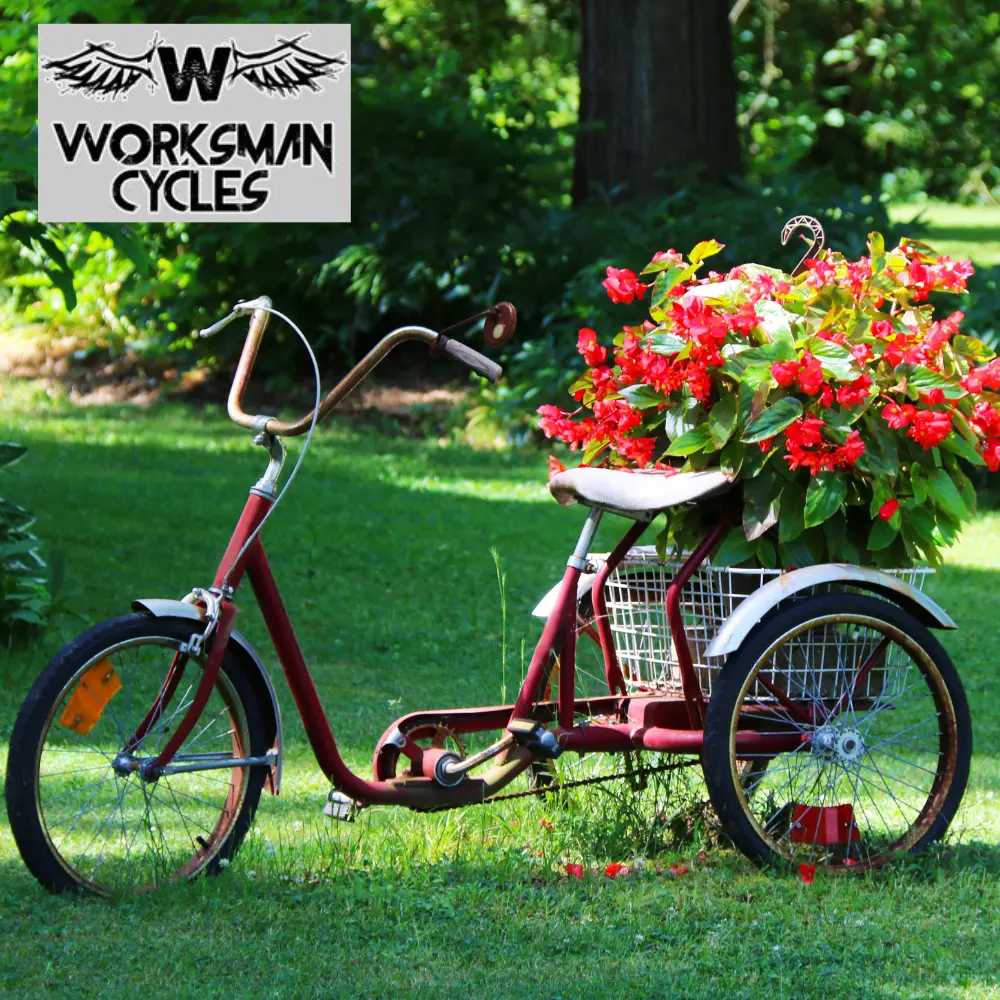Why You Should Invest in Snow Tires for Your Cargo Bike and Adult Tricycle
 Although many of us in the NYC/NJ area wish winter would never come, unfortunately, it is always inevitable. This truth is tough on cyclists who would prefer to ride over taking the subway, a car, a bus, or walking. For dedicated, daily riders, there is a particular joy and freedom experienced when riding around. Many brave souls brave the cold weather by layering up. The biggest problem during the winter is precipitation, be it snow, ice, slush, or something else. There are inherent dangers when riding a bike or trike in these conditions. Although it is impossible to eliminate all risks, it is possible to significantly mitigate these problems with a simple purchase/installation: snow tires.
Although many of us in the NYC/NJ area wish winter would never come, unfortunately, it is always inevitable. This truth is tough on cyclists who would prefer to ride over taking the subway, a car, a bus, or walking. For dedicated, daily riders, there is a particular joy and freedom experienced when riding around. Many brave souls brave the cold weather by layering up. The biggest problem during the winter is precipitation, be it snow, ice, slush, or something else. There are inherent dangers when riding a bike or trike in these conditions. Although it is impossible to eliminate all risks, it is possible to significantly mitigate these problems with a simple purchase/installation: snow tires.
Cargo Bike
Snow tires come in different sizes and styles depending on the vehicle (adult tricycle, cargo bike, traditional bicycle). These tires are designed to help keep you upright and safe. The science behind how and why these tires are ideal for keeping you upright and safe. These tires must be ridden with extreme proficiency in riding because the danger is still very much apparent. Below, we want to highlight how these awesome tires work and why the investment for your adult tricycle is justifiable.
- Wide Tires: Snow bike tires, such as those found on fat bikes, are typically 4 to 5 inches wide, compared to the 2-inch width of standard mountain bike tires. This increased width offers a larger surface area, which helps to distribute the bike's weight more evenly. It reduces the amount of pressure exerted on any single point on the snow, like the principle of a snowshoe. This design prevents the bike from sinking too deeply into soft snow, making it easier to pedal and maintain balance.
- Low Tire Pressure: Snow bike tires are designed to operate efficiently at low pressures, often between 5 to 10 psi, much lower than the standard 30-60 psi for regular mountain bike tires. The lower pressure allows the tire's sidewalls to flex more, creating a wider footprint on the snow. This increased contact area enhances grip and traction, as more of the tire's tread can engage with the snow. It also improves shock absorption, making rides over uneven terrain smoother.
- Aggressive Tread Pattern: The tread pattern on snow bike tires is much more aggressive than that of standard bike tires. These patterns feature large, deep knobs or lugs that are spaced further apart. This design serves a dual purpose: the large knobs provide ample grip as they can dig into and grip the snow, while the wide spacing between them prevents snow and slush from accumulating within the tread, which could otherwise lead to a loss of traction.
- Soft Rubber Compound: The rubber compound used in snow bike tires is specifically formulated to remain pliable in cold temperatures. Regular tire rubber can harden in cold weather, reducing traction. In contrast, the softer rubber of snow bike tires can conform better to the texture of snow and ice, maintaining a better grip. This pliability ensures the tire can maintain traction even on compacted snow or icy patches.
- Studded Options: Some snow bike tires have metal studs for icy conditions, like those in the Schwalbe Ice Spiker Pro or 45NRTH Dillinger. These studs provide an extra level of traction on ice. They work by biting into the ice, offering a grip like what spiked winter tires offer for cars. This feature helps maintain control on ice-covered trails or frozen lakes, where regular tires need help to provide sufficient grip.
For more information on getting the best snow tires for your cargo bike or adult tricycle, you should not hesitate to call our team today. We look forward to hearing from you.







